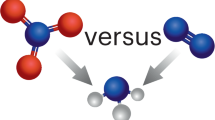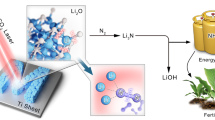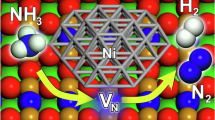Abstract
IT is generally recognised that Strutt's discovery of an active form of nitrogen is one of the most interesting results of recent investigations: it may be opportune, then, to direct attention to a phenomenon which seems to have some connection with active nitrogen. The colour of the flame of ammonia burning in oxygen is yellow, and of the same tint as the nitrogen glow in Strutt's experiment; the spectrum of the light emitted is similar. The structure of the flame is also exceptionally interesting; it consists of an inner bright yellow cone and an outer, almost non-luminous, flame. It would seem that the ammonia is first of all split up into nitrogen and hydrogen, and that the light of the inner cone is due to the combination of nitrogen atoms to nitrogen molecules, as is suggested in the case of the nitrogen glow, while in the outer flame hydrogen burns to water and some nitrogen combines with oxygen to give nitric oxide. An analysis of the products of combustion showed that nitrogen and water were the main resulting substances, but that nitrogen peroxide was also produced in considerable quantity.
This is a preview of subscription content, access via your institution
Access options
Subscribe to this journal
Receive 51 print issues and online access
$199.00 per year
only $3.90 per issue
Buy this article
- Purchase on SpringerLink
- Instant access to full article PDF
Prices may be subject to local taxes which are calculated during checkout
Similar content being viewed by others
Author information
Authors and Affiliations
Rights and permissions
About this article
Cite this article
EGERTON, A. The Ammonia Flame. Nature 89, 270 (1912). https://doi.org/10.1038/089270a0
Issue date:
DOI: https://doi.org/10.1038/089270a0



